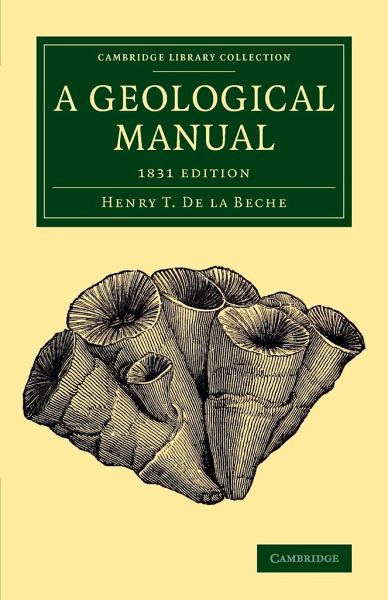
A Geological Manual
1831 Edition
Versandkostenfrei!
Versandfertig in 1-2 Wochen
60,99 €
inkl. MwSt.

PAYBACK Punkte
30 °P sammeln!
Sir Henry Thomas De la Beche (1796-1855) served as president of the Geological Society from 1847 to 1849, having contributed greatly to the development of geological science and surveying in the first half of the nineteenth century. He was also instrumental in the establishment of the Museum of Practical Geology in London. Reissued here in its 1831 first edition (which Darwin had with him aboard the Beagle), this work sought to help students to grasp the fundamentals of a rapidly advancing science. The first section considers the Earth's shape, density, temperature and other characteristics. T...
Sir Henry Thomas De la Beche (1796-1855) served as president of the Geological Society from 1847 to 1849, having contributed greatly to the development of geological science and surveying in the first half of the nineteenth century. He was also instrumental in the establishment of the Museum of Practical Geology in London. Reissued here in its 1831 first edition (which Darwin had with him aboard the Beagle), this work sought to help students to grasp the fundamentals of a rapidly advancing science. The first section considers the Earth's shape, density, temperature and other characteristics. The next part includes discussion of beaches, volcanos, and coastal processes. De la Beche then presents descriptions of various rock types, reflecting the state of contemporary geological knowledge. Highly successful, the book went through two further English editions; the expanded third edition is also reissued in this series.




